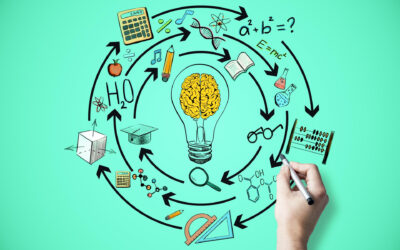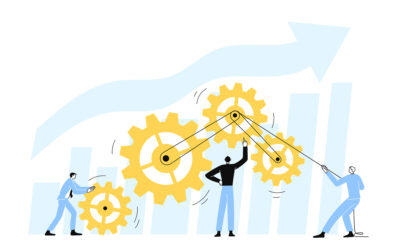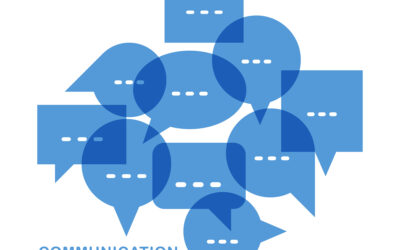Web3 is the next big evolutionary leap forward of the internet that is currently a work-in-progress and isn’t exactly defined yet. But the general consensus is that it will focus on 3 main features:
- It will be decentralized using blockchain technology, which means that rather than being controlled by Big Tech companies or governments, it will be far more user controlled.
- AI will play a large role, but organizations and algorithms will have to find new ways to get at user data, and determine the meaning and value from new data altogether.
- A metaverse or augmented reality, mixed reality, or virtual reality layer will accompany it.
There’s a lot more to it than this but it’s important to not only understand the technology, but the trending needs driving its direction.
What Drove The Need For a Decentralized Web?
The truth few want to admit is that the ongoing culture war accelerated the adoption and need for decentralized models.
Mainstream media and tech companies do not want to acknowledge how the need has arisen so sharply. But the reality is that as Big Tech companies adopted the popular “woke” culture and ideology, became social activists, politicizing their brands, censoring, debanking and deplatforming people and organizations who did not agree with their preferences or positions. The social activism and cancel-culture introduced volatility and the complete erosion of trust in the business community. And many other large institutions sought to stay neutral and avoid confronting the behavior, until they were eventually overrun by the trend as well.
As a business leader, how can you do business on the cloud, if the cloud services are dictating the culture of you as an individual and your organization? This has far reaching implications and presents a clear and present danger to the business community. Further, culturally, in the United States especially, individuals and organizations do not like having beliefs forced upon them or being oppressed for merely holding dissenting views. But the major platform providers, social media, and banking industry all adopted the “woke” culture trend.
In this case by Woke we mean the vague, half-baked, and nebulous idealistic world view of selective social activism, willful hypocrisy, and cultural marxism wrapped up in the name of social justice, environmentalism and defending “democracy” and to stop “hate speech”. Inextricable from this culture is the belief of mob rule, use of force, censorship, deplatforming, canceling, and lack of tolerance for civil discourse and debate. And to top it off, denial and hedging with concepts such as “community guidelines” and increasingly vague definitions of hate speech, violence, and other fragility based, infantilizing concepts are at the forefront of this cultural movement. This has been adopted as appropriate and justified behavior by some of the largest corporations, platform and service providers to date.
It is no no longer subjective or political to state that the adoption of social activism involving the use of force, censorship, cancellation, bullying and other forms of coercion, directly drove the need for decentralization. This is the core truth that accelerated the need for technology to evolve. Put plainly, businesses sold out for a trend that created so much risk and volatility, that it accelerated the adoption of decentralizing technologies.
Blockchain – Bigger Than Crypto Currency
Blockchain technology stores data online in a way so that it is only ever under the control of the person who owns it, even if it happens to be stored on a server owned by a corporation or subject to the control of a local government. This is a very generalized way to understand it but functional for most people and teams.
Now there is also a new deceit in the blockchain game, which is based around how the data is verified and who is really in charge. The argument that proof of work (using computers to do math to mine coins and verify data) is bad for the environment is a farce cover-up and excuse to move to a proof-of-stake model. In order to jump into the environmental argument, proponents of this argument are once again telling the masses that there is good computing and bad computing, and then selectively calling out which uses of electricity are morally or socially good.
Proof of stake is a centralized model where a powerful few control and influence the direction and governance of a currency or blockchain platform. It is a more complex version of centralized power where either the parties bringing the money or controlling the programming/governing administrators are truly in power.
Other important concepts that are often used in relation to web3 are “open,” “trustless” and “permissionless.” Trustless means there is no need for a trusted third party to validate the exchange. Permissionless means that neither party needs the permission or approval of a third party. This is deceptive though, as the exchanges or governing algorithms become a third party, and are as susceptible to corruption as those programming them, as has been seen in multiple blockchain scams in headlines of late.
Decentralized Autonomous Organisation (DAO) describes a group, company or collective that are bound by rules and regulations coded into a blockchain. The idea here is that this will be a less corruptible structure than the traditional organization, but its worth pointing out that it clearly merely shifts the center of control to those programming or directing the programming. While no individual could make a change on its own, a board, or committee may have the power to do so. So in all its efforts, it is still quite easy to centralize, especially when combined with a proof of stake model.
AI, Machine Learning and Data Scraping of The Future
Most people believe artificial intelligence (AI) will playa big part in web 3 due to heavy involvement of machine-to-machine communication and decision making needed. However new algorithms will be needed to analyze new data structures. It might not be as easy as scraping the plain text exchanges on social media platforms, AI may have to analyze the ledgers and records themselves and glean what it can. Whether these new data structures will yield actionable analytics, remains to be seen.
What is Web 3 Really?
Critics accurately describe web 3 as a marketing buzzword for the future of the web, and not a concrete framework for the web. So far, it is a bundle of emerging technologies (blockchain, crypto-currency, AI + Machine Learning, and Mixed Reality (AR/VR/XR) ) with a lot of promise, but it is in the Wild West stage right now.






